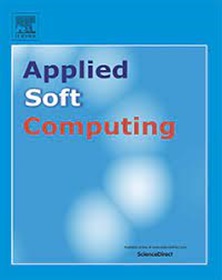Artificial intelligence-based semi-supervised crop and weed semantic segmentation
IF 7.2
1区 计算机科学
Q1 COMPUTER SCIENCE, ARTIFICIAL INTELLIGENCE
引用次数: 0
Abstract
Accurate segmentation of crop and weed by farming robot camera can increase crop production and reduce unnecessary herbicide, which is a fundamental task in the field of sustainable and precision agriculture. However, obtaining the pixel-wise annotation of training data manually is expensive. As a solution to address this limitation, semi-supervised learning leverages a small amount of labeled data and a large amount of unlabeled data for learning. In this context, we propose a network based on vector quantization and prototype loss for semi-supervised crop and weed semantic segmentation (VQP-Net). VQP-Net achieves a strong performance in terms of consistency regularization through the implementation of a vector quantization module and prototype loss, and is capable of extracting discriminative features of crops and weeds, which are often indistinguishable. We conducted experiments using the proposed method with three open datasets: BoniRob, crop/weed field image, and rice seedling and weed datasets. The crop and weed segmentation accuracies based on mean intersection over union (mIOU) for the three datasets were 0.8643, 0.8329, and 0.7623, respectively, demonstrating that this method outperformed the state-of-the-art methods.
基于人工智能的半监督作物和杂草语义分割
利用农业机器人相机对作物和杂草进行精确分割,可以提高作物产量,减少不必要的除草剂,这是可持续和精准农业领域的一项基础任务。然而,手动获取训练数据的逐像素标注是非常昂贵的。作为解决这一限制的解决方案,半监督学习利用少量标记数据和大量未标记数据进行学习。在此背景下,我们提出了一种基于矢量量化和原型损失的半监督作物和杂草语义分割网络(VQP-Net)。VQP-Net通过实现矢量量化模块和原型损失,在一致性正则化方面取得了较强的性能,能够提取出难以区分的作物和杂草的判别特征。我们在三个开放数据集上进行了实验:BoniRob、作物/杂草田图像和水稻幼苗和杂草数据集。基于mIOU的作物和杂草分割精度分别为0.8643、0.8329和0.7623,表明该方法优于现有方法。
本文章由计算机程序翻译,如有差异,请以英文原文为准。
求助全文
约1分钟内获得全文
求助全文
来源期刊

Applied Soft Computing
工程技术-计算机:跨学科应用
CiteScore
15.80
自引率
6.90%
发文量
874
审稿时长
10.9 months
期刊介绍:
Applied Soft Computing is an international journal promoting an integrated view of soft computing to solve real life problems.The focus is to publish the highest quality research in application and convergence of the areas of Fuzzy Logic, Neural Networks, Evolutionary Computing, Rough Sets and other similar techniques to address real world complexities.
Applied Soft Computing is a rolling publication: articles are published as soon as the editor-in-chief has accepted them. Therefore, the web site will continuously be updated with new articles and the publication time will be short.
 求助内容:
求助内容: 应助结果提醒方式:
应助结果提醒方式:


